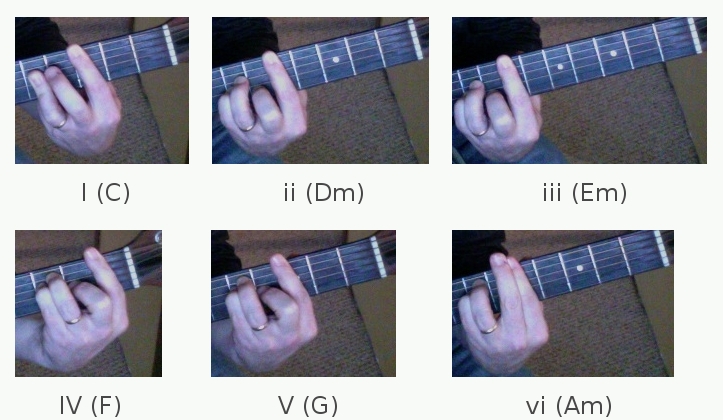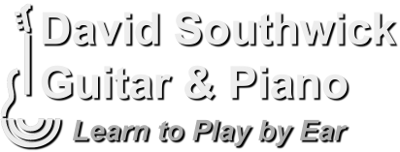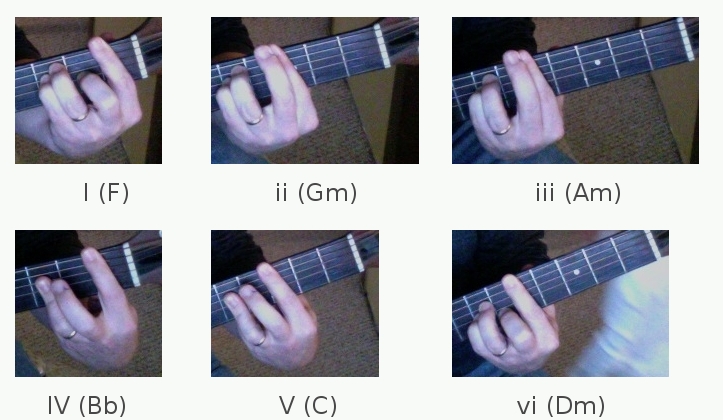Barre Chords
Putting it All TogetherVisualizing How Chords Relate to Each Other
Numbering the Chords in a Key with Barres
“Barre chords enable the guitarist to visualize and transpose with ease.”
For people applying chord theory and chord numbering on the piano/keyboard, it is easy to visualize how the chords work together. For the guitarist, it is not that simple. Many musicians have moved to the Nashville Number System for chording songs, and instead of writing the progression G, C, D, C, they might write 1, 4, 5, 4 with the thought that they may transpose from one key to any key. This is one of the benefit of understanding chord theory: making transposing easier.
Barre chords enable the guitarist to visualize and transpose with ease. If we are in the key of F, we can play all our major and minor chords with these barre chords (remember I, IV and V are major; ii, iii, and vi are minor):
Some important things to observe here include:
- The I, ii, and iii chords are all whole steps apart. We use the E shape barre chord for them, changing to the Em shape on chords ii and iii because they are to be minor.
- The IV, V, and vi chords are all whole steps apart. We use the A shape barre chord for them, changing to the Am shape on the vi chord because it is minor.
- The chords line up in the same frets: I and IV are in the same frets, as are ii and V, and iii and vi.
Starting with an A Shape Barre Chord
When the Root is An A Shape
What if our starting chord, our I chord, was an A shape barre chord? Let’s say we wanted to play chords I, ii, iii, IV, V, and vi, in the key of C. Our I, ii and iii chords would be A or Am shapes, and our IV, V, and vi chords would be E or Em shapes offset by two frets as in the picture below:

This pattern could be copied up or down the fret board to change keys. In other words, if we would want to change to the key of D, each of our chords I through vi would be moved up two frets or a whole step.
Let’s say we wanted to do a popular progression in the key of C: 1 , 4, 6, 5 (I, IV, vi, V). We would be playing chords C, F, Am, G. It would look like this:

To modulate this progression, we could take it up or down the fretboard. To change to the key of D, everything would slide up two frets, and we would be playing chords D, G, Bm, A. To change to the key of B, we would instead go down one fret and be playing chords B, E (no barre finger here), G#m, and F#.
Thus we can raise or lower any key rather easily, when we play with barre chords. Additionally, the more one plays barre chords, they begin to visualize and hear chord progressions, which make them more easy to transpose into other keys.
My Store
You can support this page by making your music purchases through this website. All purchases are directly through Amazon, through this website. You can make any and all of your Amazon searches and purchases here.




0 Comments